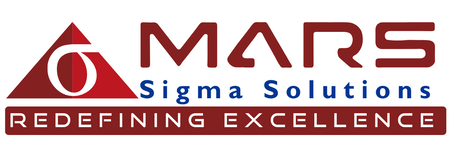Supplier Development
Supplier QMS Improvements
New Product Development
Supplier Audits
Customer Specific Requirements
Direct-on-Line (DoL)
PPAP Approval
Visual Management
SQ Mark / 100 PPM Certifications / MSIL Audits

What is Supplier development ?
Supplier development is the process of working with certain suppliers on a one-to-one basis to improve their performance for the benefit of the buying organization.
Supplier development is a business strategy that involves working with suppliers diverse suppliers to boost their performance and drive continued business growth. Through education, mentoring, and access to resources, suppliers help drive more sustainable and robust economic opportunities for suppliers own business
Supplier development requires trust and collaboration. These elements encourage companies to foster long-term relationships with their suppliers, helping them gain the economic and business resources they need for continued growth and success.
Advantages of Supplier Development:
- Full transparency between organization and supplier
- Improved collaboration between organization and supplier
- Streamlined and reduced sourcing activities and lead times
- Improved quality, manufacturability, and reliability for new designs
- Increased supplier responsiveness
- Increased customer satisfaction
- Increased awareness of supplier diversity
- Increased visibility of full supply base to procurement, quality, and even management departments
Process of supplier development:
Supplier selection
Choosing suppliers is crucial to business. And categorizing suppliers supply base is also vital to making the most of available resources when managing those suppliers.
Suppliers would ideally want all to be performing at a high level. However, companies may have large supplier lists stretching into the thousands with some naturally more critical to quality than others. Selection should be the first priority for active supplier development management.
Importers and purchasers often consider various criteria for evaluating potential suppliers when beginning their search, such as:
Developing an approved suppliers list
We often find that a company’s supply base invariably expands over time. Indeed, taking advantage of the “risk management” option of a “second source supply” is a very prudent business strategy.
Every business should make use of their approved supplier list and measure the performance of each with regard to cost, quality and delivery at a minimum. As mentioned above, listing suppliers by category will make this a more efficient and value-added initiative.
Categorizing suppliers by criteria
Suppliers can be categorized based on:
- Supplier type – critical, tooling, office supplies, maintenance and training
- Spending – high, medium, low
- Frequency of use – often, occasionally, rarely
- source supplier – yes or no
Filtering information in approved list to manage suppliers
By adding categories such as these to the supplier list, suppliers can then filter this information in numerous ways to find:
- The top five highest spending suppliers
- The top five highest spending suppliers
- Critical suppliers with no second source
- Infrequently used suppliers with low spending
A categorized list becomes a powerful tool for managing suppliers and making the most of resources to get the best added value from supply chain.
The list will help to plan the most efficient audit schedules that will have the greatest impact on the performance of suppliers and, therefore, own business.
Auditing suppliers
As with most audits, supplier audits represent a snapshot in time. Lots of information can be collected by this method, and it is indeed a mandatory requirement for most quality management systems (QMS). There are two main types of supplier audits:
Questionnaire-type supplier audits
Most sourcing experts are familiar with the questionnaire, or phone call audit. It’s an initial step that often saves time by helping suppliers vet suppliers quickly.
Questionnaires are effective at collecting basic factual data about an organization, rather than determining how effective and efficient their processes are. A questionnaire would answer queries such as:
- “What quality standards do suppliers have?”
- “How many personnel do suppliers have, and how many employees work in quality assurance?”; and
- “What type of industries do suppliers supply and at what quantities?”
Though suppliers can get information efficiently with a questionnaire-type audit, its main limitation is that such information is unverified. Suppliers likely be relying on a sales representative from the supplier, who may simply be telling suppliers what they think suppliers want to hear.
Suppliers are also limited in the scope of information suppliers can gather from a simple, questionnaire-type audit. An on-site supplier audit is typically the best way to get more in-depth and reliable information.
On-site supplier audits
On-site auditing would, of course, provide suppliers all of the information from a questionnaire-based audit and much more, such as:
- The structure of the company’s QMS
- Performance data
- Product and process management
- Results of supplier internal audits and certification audits
- A tactile feeling of how the company operates and the atmosphere within the organization
- Personal interaction with key members of the supplier’s staff
There are a couple ways suppliers can perform such an audit.
Performing suppliers own informal audit during a supplier visit
One way is to audit supplier informally while suppliers visiting their facility. Suppliers can get a lot of valuable insight just from having a look around the production area, warehouse and other grounds.
For example, suppliers don’t have to be a expert auditor to notice when a factory is obviously disorganized, doesn’t maintain production equipment or employs workers in unsafe working conditions. It’s also often immediately apparent from a visit whether a supplier:
- Is the manufacturer (factory) or a middleman (vendor); and
- 2Can actually manufacture or supply the product suppliers hope to procure
A main limitation of this kind of informal audit is that the supplier will likely be in control of what suppliers see during visit. They can coach staff on how to answer any questions suppliers might ask and limit tour to only the areas of the facility they want suppliers to see.
The other limitation is that suppliers may lack the necessary expertise to conduct a thorough audit. Results from a expert auditor tend to be far more detailed than those from a layman purchaser or importer.
We will be able to proactively manage supplier audits and factory visits in the most efficient way by analyzing the information in the approved supplier list and key performance indicators (KPIs) data, such as “right first time”, “delivery on time” and others.
Measuring supplier performance
Mars Sigma solutions shall measure supplier performance and support making the data readily available. And KPIs will become a very powerful tool if used correctly. KPIs are a good measure of overall supplier performance, such as:
- Right first time
- Delivery on time
- Response time, quotes and inquiries
- Defect rate
- Inspection and auditing results
Direct-on-line
Mars Sigma Solutions shall assist companies to achieve Direct on line (DoL) from suppliers. This will be done by following the critical steps as established mutually with the companies. Mars Sigma Solutions shall establish a road map for the same and will be adhered by reviewing the same on monthly basis.
The engineer should spend most of his or her time at the suppliers’ facilities where they’ll have the greatest impact and influence on “right first time” quality. Smaller companies, in particular, need to approach this in a smart way and use all the data available at their disposal to make informed choices with regard to supplier status.
Supplier management
Once the development stage has matured to an acceptable level, it’s time to tailor on-going management to the needs of each supplier. Tracking ongoing supplier performance is key to understanding each supplier’s needs and any required corrective actions.
For example, suppliers may experience disruptions in shipments due to seasonal fluctuations in production capacity of a particular supplier. Tracking on-time delivery over time can help suppliers take appropriate actions to avoid subsequent disruptions at that facility.
Historical quality reporting can similarly help suppliers find and address any recurring product issues that occur at certain facilities. This transparency lends to better supplier management strategies.
And through effectively managing existing suppliers, suppliers can make informed choices regarding the retention, removal or further development of each supplier to suit the needs and requirements of business.
Conclusion
Sourcing to find the right suppliers is one of the most important functions of manufacturing. Suppliers have a direct impact on the quality of product or service. “Fighting fires” later in the process is costly, wasteful and invariably leads to customer dissatisfaction—in one form or another—and loss of revenue.
Begin by choosing the suppliers that best match criteria. Compile suppliers into a categorized list for ease of organization. Audit each supplier, either by phoning them and asking important questions, or better still, visiting them in person to perform a more comprehensive audit on site.
Measure the performance of suppliers, and evaluate each objectively, by looking at their KPIs. Work with suppliers directly to cultivate a strong relationship and improve quality. By taking all of the steps above, suppliers can make informed decisions about which makes the cut and which needs further development.
Invest the time in suppliers, maintain good lines of communication, speak to the right people and avoid confusion. Suppliers are an essential key to success. And the ones suppliers choose to work with can either make or break suppliers.
